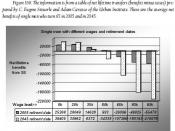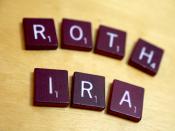An Individual Retirement Account, or annuity, (IRA) is a popular way to provide retirement benefits in a tax-efficient way. The process to set up an IRA is extremely simple. An employee simply makes contributions to a account that in turn is taken and invested into various things such as mutual funds and the stock market. The investment grows without any taxes being paid on it until retirement. The amount that is paid out at retirement equals the amount put in over time plus any interest or gains from the investment. This all became popular because it gave millions of Americans new opportunities to invest for retirement.
Advantages of an IRA are many. The four most important are: contributions are tax deductible, the investment grows tax-deferred, the investor has dull control over the plan, and an IRA is easy to establish. These tax advantages can have powerful results. It makes a lot of sense to start your investment early.
For example: a person starts investing at age forty-one, at age sixty-five they will have about $100,000. A person who starts investing at 21 will have $460,000. The amount of risk involved is medium, and IRA's are terrific opportunities offered by the federal government for do-it-yourself investing. Other advantages are insured safety and new tax laws. Many people in the next generation after the baby-boomers do not believe that Social Security will be around for them to reap the advantages. An IRA is an excellent substitute for money and income during retirement.
The disadvantages of an IRA are that the amount received at retirement may not be amount to meet needs, the employer cannot control the timing of withdrawals, and distributions are fully taxable investments. Also, total contributions cannot exceed $2000 per year. While you may make certain early withdrawals from...


